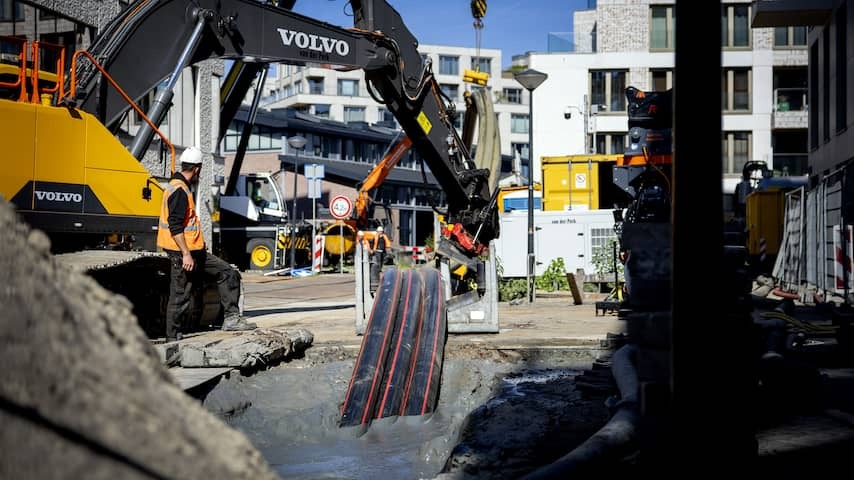
Bij Enexis staan momenteel zo’n 9.000 bedrijven op de wachtlijst voor een stroomaansluiting. Dat zijn er ruim duizend meer dan vorig jaar. Ook waarschuwt de netbeheerder dat de kans op storingen groeit door overbelasting van het stroomnet.
Dit komt doordat de wachtrij Enexis ertoe aanzet het elektriciteitsnet nog zwaarder te belasten dan het al deed. “Dat betekent dat op sommige plaatsen het net voor meer dan 100 procent wordt belast. Hierdoor groeit de kans op overbelasting en op storingen”, legt het bedrijf uit.
De problemen zijn de afgelopen jaren ontstaan doordat zowel de vraag naar stroom als het aanbod ervan fors zijn gegroeid. Dit komt onder meer door de groei van het aantal elektrische auto’s en warmtepompen en door de komst van veel windparken en zonnepanelen.
De beste oplossing is om het stroomnet uit te breiden. De netbeheerder noemt die bouwopgave “gigantisch” en investeerde vele honderden miljoenen euro’s in uitbreiding.
Maar daarbij loopt het bedrijf wel tegen problemen aan. Zo is er te weinig personeel, is het lastig om een vergunning te krijgen, is er nauwelijks ruimte en zitten stikstofregels in de weg. Mede daardoor is de verwachting dat het jaren duurt voordat de uitbreidingen de drukte op het net verminderen.
In de tussentijd zorgt die drukte voor tal van problemen. Want niet alleen moeten zakelijke klanten langer wachten op een aansluiting, ook woonwijken kunnen soms niet worden afgemaakt doordat er geen aansluiting beschikbaar is.
In de tussentijd wordt gekeken naar andere oplossingen. Zo riep de overheid burgers eerder dit jaar op om hun stroomverbruik te verplaatsen naar momenten op de dag dat het rustiger is op het net. Zo zou het beter zijn als mensen bijvoorbeeld de was niet doen en hun elektrische auto niet opladen tussen 16.00 en 21.00 uur.
Netbeheerders proberen ook bedrijven ertoe aan te zetten hun verbruik te verplaatsen naar rustigere momenten. Maar Enexis meldt dat hier weinig animo voor is.
Ondanks de drukte was het stroomnet in de eerste zes maanden betrouwbaar. Wie is aangesloten via Enexis had in de eerste jaarhelft gemiddeld 10,5 minuten geen elektriciteit. Dat was in dezelfde periode vorig jaar 12,8 minuten.
Enexis currently has approximately 9,000 companies on the waiting list for a power connection. That is more than a thousand more than last year. The grid operator also warns that the risk of malfunctions is growing due to overloading of the electricity grid.
This is because the waiting line prompts Enexis to load the electricity grid even more heavily than it already did. “That means that in some places the grid is loaded for more than 100 percent. This increases the risk of overloading and malfunctions,” the company explains.
The problems have arisen in recent years because both the demand for electricity and the supply of it have grown considerably. This is partly due to the growth in the number of electric cars and heat pumps and the arrival of many wind farms and solar panels.
The best solution is to expand the electricity grid. The grid operator calls this construction task “gigantic” and invested many hundreds of millions of euros in expansion.
But the company does face problems in this regard. For example, there is too little staff, it is difficult to obtain a permit, there is hardly any space and nitrogen rules are in the way. Partly as a result, it is expected that it will take years before the expansions reduce the pressure on the grid.
In the meantime, that pressure causes numerous problems. Because not only do business customers have to wait longer for a connection, residential areas sometimes cannot be completed because no connection is available.
In the meantime, other solutions are being looked at. For example, the government called on citizens earlier this year to move their electricity consumption to times of the day when it is quieter on the grid. For example, it would be better if people did not do their laundry or charge their electric car between 4:00 PM and 9:00 PM.
Grid operators are also trying to encourage companies to move their consumption to quieter times. But Enexis reports that there is little interest in this.
Despite the crowds, the electricity grid was reliable in the first six months. Anyone connected via Enexis had no electricity for an average of 10.5 minutes in the first half of the year. That was 12.8 minutes in the same period last year.